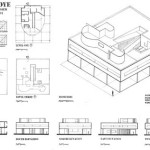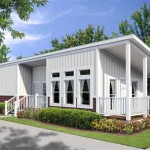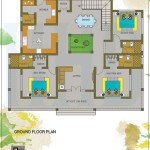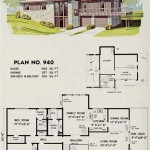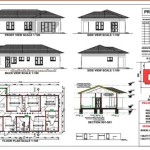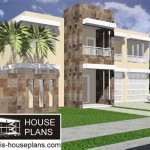Split Level House Plans of the 1960s: A Comprehensive Overview
Split-level homes, a defining architectural style of the 1960s, continue to captivate homeowners with their unique and functional designs. These homes have made a lasting impression on residential architecture, and their popularity endures today.
This article aims to provide a comprehensive overview of split-level house plans of the 1960s, highlighting their key characteristics, advantages, and floor plan variations. By exploring these essential aspects, readers can gain a deeper understanding of these iconic homes and their enduring appeal.
Key Characteristics of Split Level House Plans
Split-level homes are characterized by their distinctive multi-level design, typically featuring three or more levels split across different elevations. This unique configuration offers several advantages, including:
- Efficient Space Utilization: Split-level homes maximize floor space by dividing it into multiple levels, allowing for separate living areas without sacrificing overall square footage.
- Versatile Layouts: The multi-level design provides flexibility in floor plan arrangements, allowing homeowners to customize their living spaces to suit their specific needs and preferences. li>Natural Light and Ventilation: The staggered levels and numerous windows allow for ample natural light and cross-ventilation, creating a more comfortable and inviting living environment.
Advantages of Split Level House Plans
In addition to their key characteristics, split-level house plans of the 1960s offer several advantages over traditional single-level or multi-story homes:
- Privacy and Separation: The split-level design provides a natural separation between different living areas, allowing for privacy and the creation of distinct spaces for different activities.
- Accessibility and Convenience: The gradual elevation changes between levels make split-level homes more accessible than multi-story homes, reducing the need for stairs and providing better flow for everyday living.
- Cost-Effectiveness: The efficient use of space and the potential for reduced foundation costs can make split-level homes a more cost-effective option compared to homes with larger footprints or multiple stories.
Floor Plan Variations
Split-level house plans of the 1960s came in a variety of floor plan variations to cater to different needs and preferences. Some common layouts include:
- Tri-Level Split: This classic split-level design features three levels, with the main living areas on the middle level, bedrooms on the upper level, and a family room or garage on the lower level.
- Bi-Level Split: A simplified version with two levels, featuring the living areas on one level and the bedrooms on the other, separated by a half-flight of stairs.
- Raised Ranch: A variation that combines a split-level design with a raised foundation, providing additional space and natural light in the lower level.
While these floor plan variations are typical, architects and builders often customized split-level homes to meet the specific requirements of their clients. This flexibility in design made split-level homes highly adaptable to various lifestyles and preferences.
Enduring Appeal of Split Level House Plans
Despite the passage of time, split-level house plans of the 1960s continue to enjoy enduring appeal for several reasons:
- Nostalgic Charm: These homes evoke a sense of nostalgia for a bygone era, reminding people of their childhood homes or the homes of their grandparents.
- Functional Design: The split-level design remains a practical and functional choice for families, providing ample space and privacy while maintaining accessibility and flow.
- Architectural Interest: The unique and distinctive appearance of split-level homes sets them apart from other architectural styles, adding visual interest to neighborhoods.
Whether it's for their nostalgic charm, functional design, or architectural interest, split-level house plans of the 1960s continue to captivate homeowners and remain a popular choice for those seeking a unique and timeless living space.

1960 Mid Century Modern House Plans Vintage

Untitled House Plans With Pictures Mid Century Modern Vintage

See 125 Vintage 60s Home Plans Used To Design Build Millions Of Mid Century Houses Across America Americana

Don T Dis The Split Susan Yeley Homes

See 125 Vintage 60s Home Plans Used To Design Build Millions Of Mid Century Houses Across America House

Bi Level Split Homes Offered Hybrid Design In Lancaster From 1960s To 80s Architecture Column Com
Architecture Split Level Houses Why Cyburbia Urban Planning Placemaking And More

Split Level House Designs The Plan Collection

Vintage Real Estate Choose Your House From A 1958 Modern Living Homes Catalog The Inn

Open Concept Remodeling Ideas For A 1960 S Split Level House Degnan Design Build Remodel


